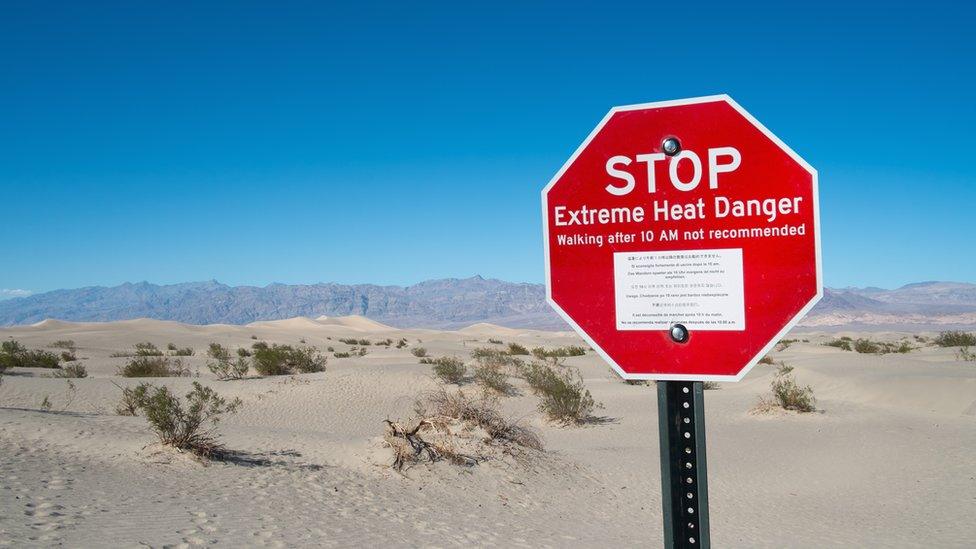Death Valley: One of the hottest temperatures recorded
- Published
- comments

Death Valley is known for having harsh temperatures
A temperature of 54.4C has been recorded at Death Valley in California.
The temperature is half of the heat needed to boil a kettle and it could be the hottest weather that's been recorded reliably on Earth.
The extreme heat was recorded by a weather station at Furnace Creek which is on the border between the US state of California and Nevada.
A statement from the National Weather Service in Las Vegas said:
"This observed high temperature is considered preliminary and not yet official."
"If verified, this will be the hottest temperature officially verified since July of 1913, also at Death Valley."
The potentially record-breaking temperature was recorded in Death Valley, California
The temperature reading will be investigated by the National Center for Environmental Information and the World Meteorological Organisation.
If it is confirmed it would be hottest temperature in August ever in the US, officially the third hottest temperature ever recorded in the world and possibly the hottest temperature that has been reliably recorded ever!
According to the World Meteorological Organisation, the all-time highest temperature reading was also recorded in Death Valley.
Greenland Ranch hit 56.7C on 10 July 1913. However, some experts say older temperature reports can't be trusted because the thermometers used weren't as accurate as they are today.
It's believed that the valley was given its name by settlers who first found it in 1850. One of the settlers died in the valley and survivors named it 'Death Valley'. Today the valley is known for it's extreme temperatures in winter and in summer.
US Heatwave
The hot weather is thanks to a heatwave on the US west coast, where temperatures are forecast to rise further this week.
The hot temperatures are spread across several US states from Arizona in the south-west, up the west coast through California and into the state of Washington in the north-west.
As temperatures soared in California, a large "firenado" was seen. This happens where flames from bush fires are sucked up into the funnel of a tornado.
The "firenado" was seen in California
The hot temperatures has meant an increase in electricity usage for air conditioning.
Much of the region's power relies on renewable energy such as solar power or wind farms and the power grid has become so strained through usage that California's Independent System Operator (CISO), which manages the state's power, has declared a Stage 3 Emergency.
In order to manage the state's demand for power and prevent a complete shutdown, officials are scheduling blackouts, when local power companies cut the power supply for a period of time, to manage energy use.
- Published11 August 2020
- Published16 September 2019
